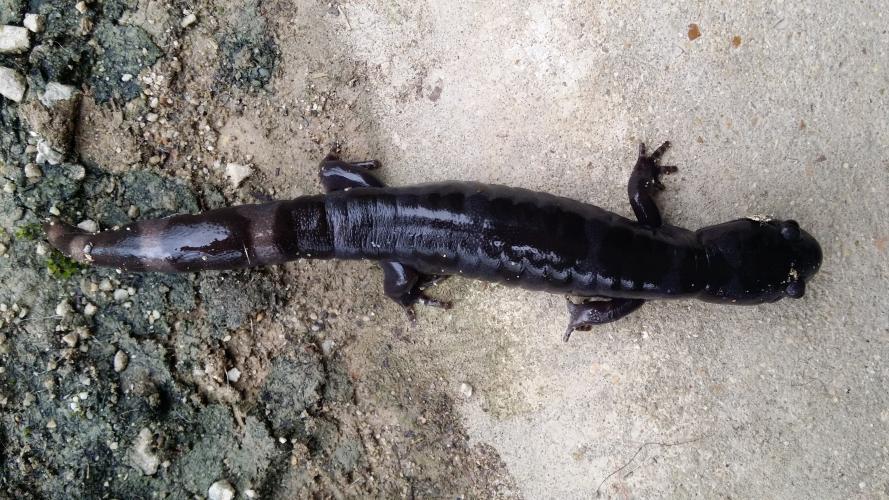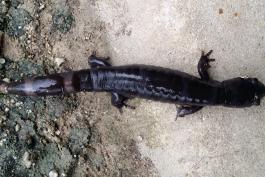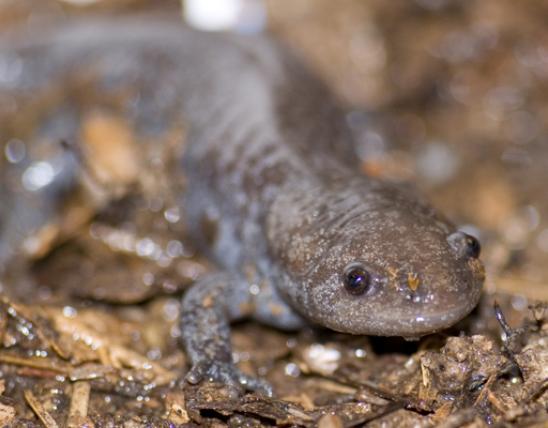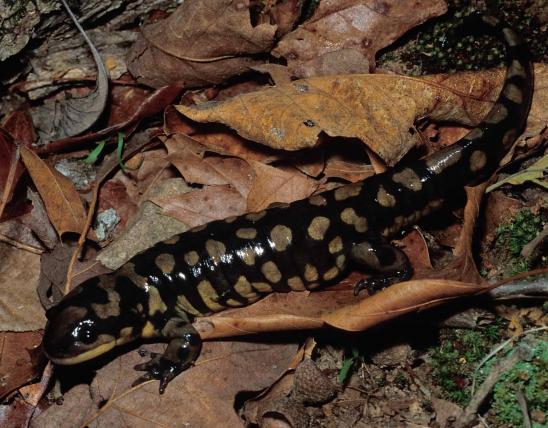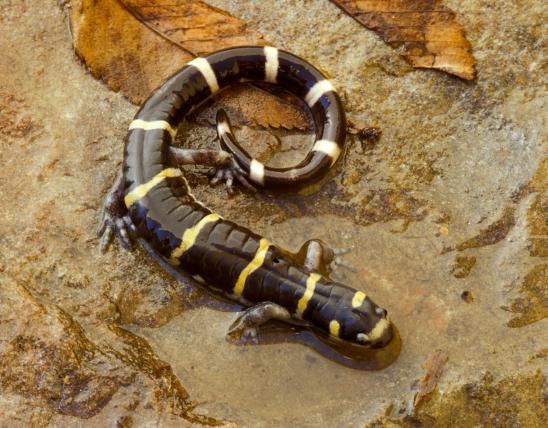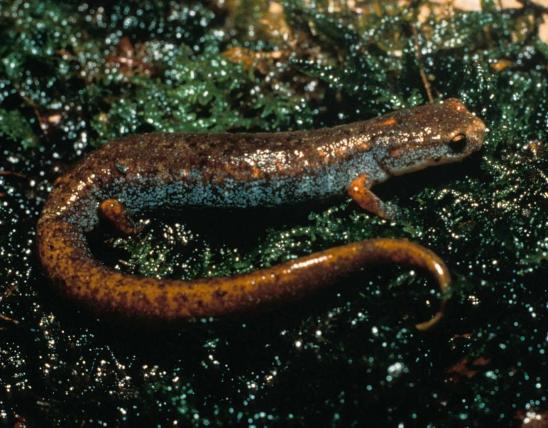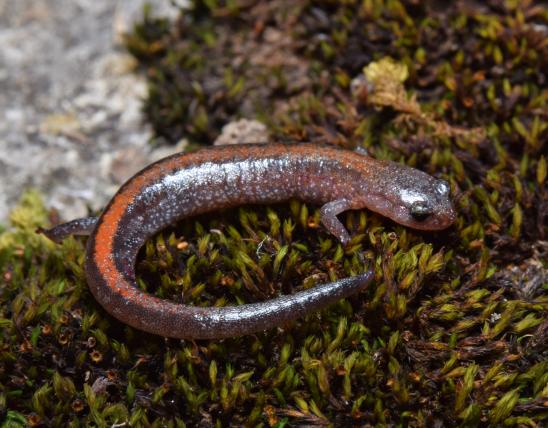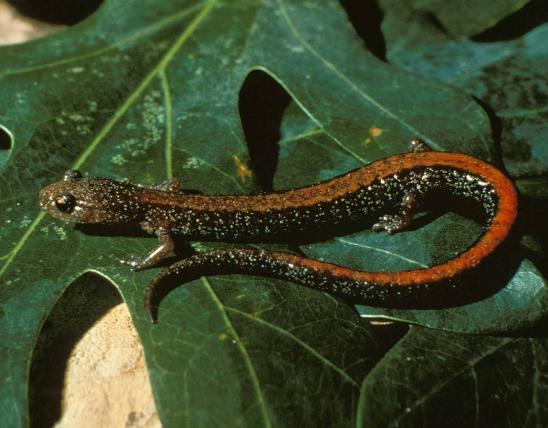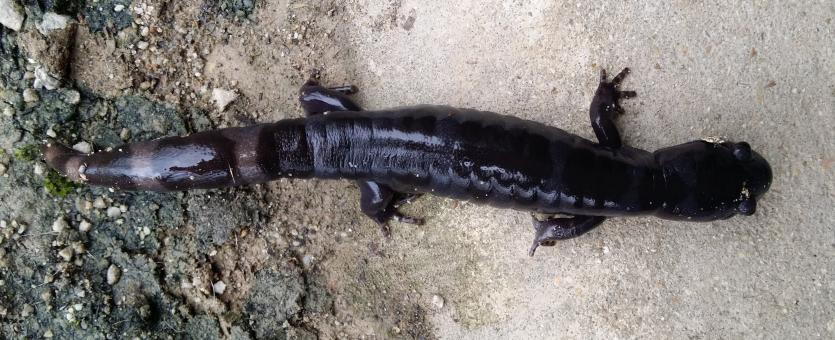
The marbled salamander is a small, stout salamander with silvery, white, or gray saddle-shaped markings on its body from head to tail. These crossbands vary in shape and also in color, from silvery white to gray. The back is generally shiny jet black while the belly is plain black. Adult males have white or silver crossbands; adult females have light- to dull-gray crossbands. There may be 11 or 12 riblike costal grooves on the side of the body.
Similar species: This is one of six Missouri species of mole salamanders (family Ambystomatidae); all six are in genus Ambystoma. This is the only one with silvery white or gray saddle-shaped markings (not flecks).
Adult length: 3½–4¼ inches; occasionally to about 5½ inches.
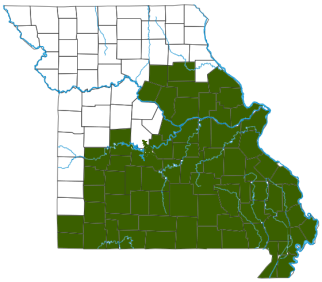
Approximately the southeastern half of the state. Occurs in the Mississippi Alluvial Basin, the Ozark Highlands, and the forested river hills of the Missouri River in eastern Missouri.
Habitat and Conservation
This secretive salamander spends most of its time under rocks, logs, or forest debris. It prefers forested areas but may also occur in open, sandy woods and on dry, rocky hillsides.
The marbled salamander and many other amphibians require small, fishless, woodland ponds for reproduction. Ponds and pools with a gentle sloping bank are especially important for this species.
Marbled salamanders are seldom encountered except during the autumn breeding season.
Generally speaking, members of the mole salamander family spend most of their time underground. Outside of breeding season, adults spend most of their time in the soil (often in burrows made by small mammals) or under logs and rocks. They are often active at night, especially after a heavy rain.
Food
Food probably consists of insects, worms, slugs, and other invertebrates found under rocks or logs.
Status
Locally common.
Life Cycle
Breeding takes place in the autumn, on land near fishless, woodland ponds or swamps. (Most Missouri mole salamanders breed in early spring, in the water of ponds.) Females can be inseminated before reaching the breeding pond, meaning that courtship and fertilization sometimes occur before they arrive at the pond.
Each female may lay 50–200 eggs, typically around 100, usually in small depressions under logs, in leaf litter, or under vegetation at the edge of the water, notably at the edges of reduced ponds or dry beds of temporary ponds.
The female stays coiled around the eggs (improving the survival rate of her offspring), until autumn rains cause the pond water to rise over the eggs. The larvae hatch and develop in the water during the winter, and metamorphosis takes place in late spring and into summer.
Human Connections
Conservation for this and many other amphibians revolves around protecting their habitats: small, fishless, woodland ponds, especially ones with gentle, sloping banks. You can enhance the breeding habitat by providing logs along the edge of the water for egg-laying niches.
These salamanders are seldom encountered except during the autumn breeding season as they move toward ponds. When an animal isn’t seen very often, it becomes a genuine treat to discover in the wild.
Ecosystem Connections
Like other mole salamanders, marbled salamanders are predators of smaller creatures, but though they are voracious predators of insects, worms, and slugs, they, along with their eggs and juvenile forms, provide food for many other hungry animals.
